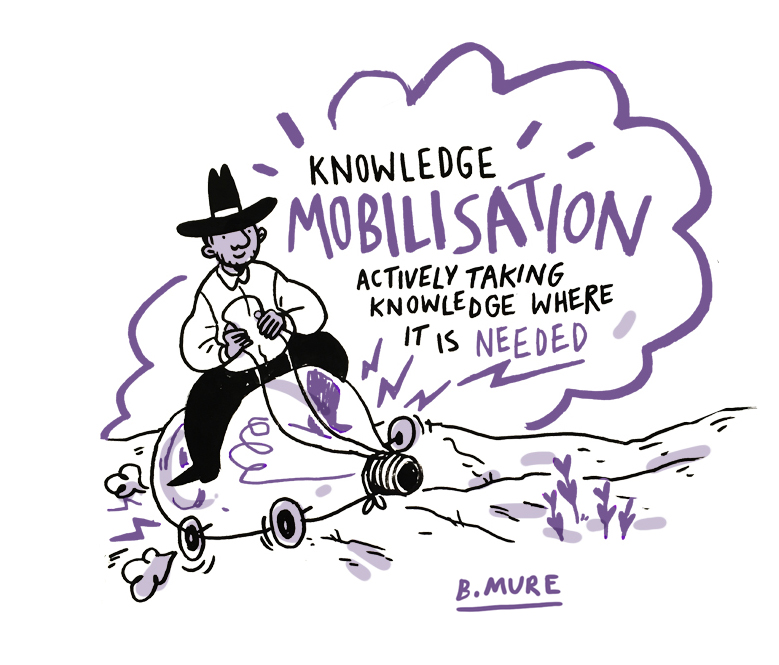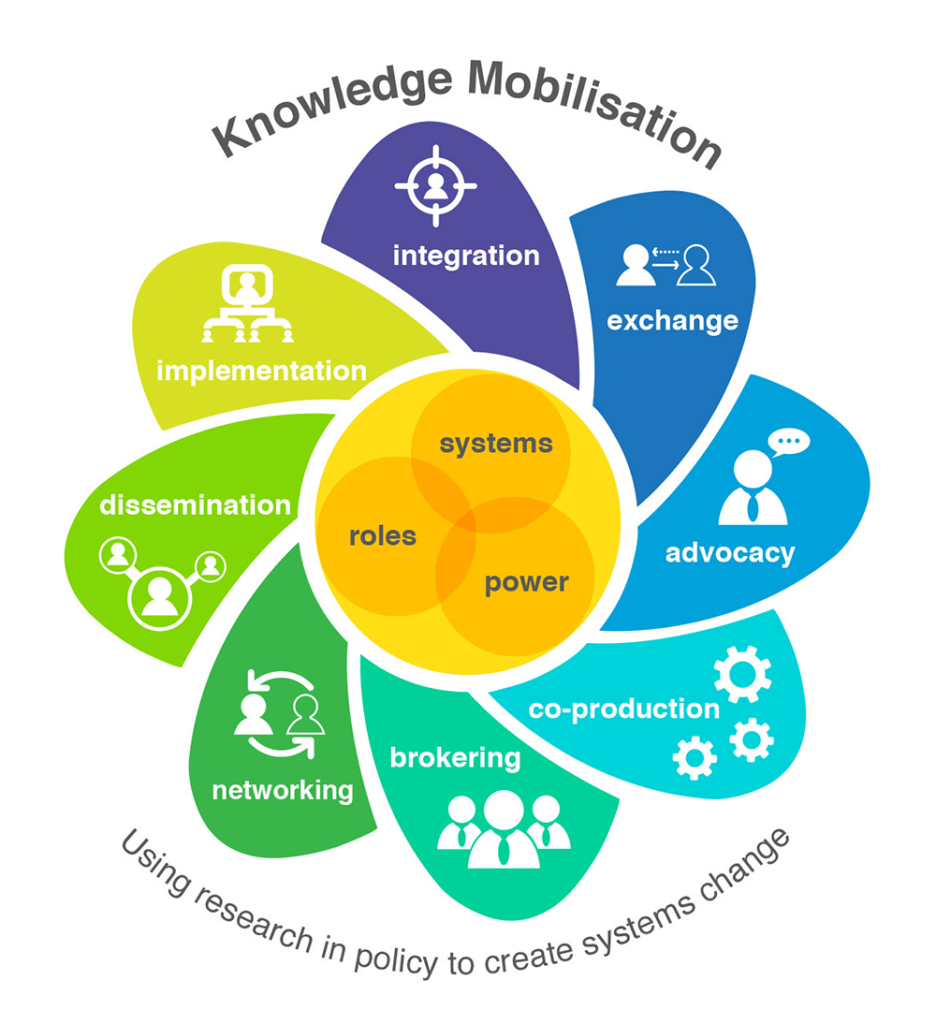First things first – what are we talking about when we say Knowledge Mobilisation?
Definitions
I have come across lots of different ways to describe Knowledge Mobilisation. Some great ones include:
Knowledge mobilisation strategies are about sharing knowledge between different communities to create new knowledge and catalyse change. Knowledge mobilisation is a two-way process and views knowledge as a process not as a product. (University of Bristol)
Knowledge mobilisation: The process that paves the way to impact via active collaboration with key stakeholders throughout your research. This includes working with the people and organisations who will use or benefit from research (knowledge users). Together, stakeholders share and integrate their knowledge. This creates new insights and understanding about your research plans and findings. The ultimate aim is to change practice and policy and have real-world impact. (NIHR)
These is not really much to add to these definitions, so I am not going to try and come up with my own one.
However, I am trying to find a simple yet accurate visual representation that hits the nail on the head. Something I can show to a wide range of audiences (from explaining my job to my parents, to explaining the knowledge mobilisation process to key stakeholders at the start of an new public health evaluation).
Basically, I am trying to mobilise knowledge on Knowledge Mobilisation (am I too keen?), and I am trying to have a one-size fits all diagram (too ambitious?).
Visuals
The two visuals on Knowledge Mobilisation I have come across to date are on either side of the “straightforward” spectrum.
First we have a simple, engaging and playful caricature from B. Mure. Great depiction of Knowledge Mobilisation, but it doesn’t really show the different interlinking strands that are involved.

On the other hand we have a very comprehensive graphic from the Australian Prevention Partnership Centre. This one almost shows too many strands, and would probably need some background explanatory text for newbies in the field.

It goes without saying that these two visuals are most likely intended for different audiences – and knowing your people – your audience – is a key part of Knowledge Mobilisation.
So, going with this train of thought of an audience-focused approach, I have come up with the following:

It utilises the phrase “right people, right time, right information, right format” which is a re-occurring way to describe Knowledge Mobilisation (e.g. Research Impact Canada, Simeonov et al 2021). I have put it in a Venn diagram, showing that if the different elements align, Knowledge Mobilisation can pave the way for impact.
I think it is simple and hopefully intuitive enough. It shows the different dimensions and skills that are required when mobilising knowledge (e.g. the right people –> stakeholder analysis; the right time, the right information –> context analysis; the right format –> some sort of passable writing/design skill).
It also recognises that – depending on who your audience(s) is/are – you may have several different knowledge mobilisation efforts going on at the same time.
And it is people-focused. What is the “right time”, “the right format” and the “right information” will highly depend on the people you are trying to reach. This, too, is a re-occurring theme in Knowledge Mobilisation literature (e.g. “Knowledge mobilization is connecting people with people, and people with evidence” (Simeonov et al., 2017).)
I am very aware that this graphic does not show two crucial things: it does not show the two-way process, i.e. how knowledge mobilisation differs from dissemination. It also does not show the integrative process, i.e. knowledge mobilisation happens throughout a project, co-produced with key stakeholders – knowledge mobilisation is not an afterthought.
So… look out for V2 at some point.
As always, any feedback or thoughts much appreciated.
This post has very much focused on the “What” (What is Knowledge Mobilisation?). I will aim to cover the “How” (How to do it?) and the “Why” (Why do Knowledge Mobilisation) in a separate post.


